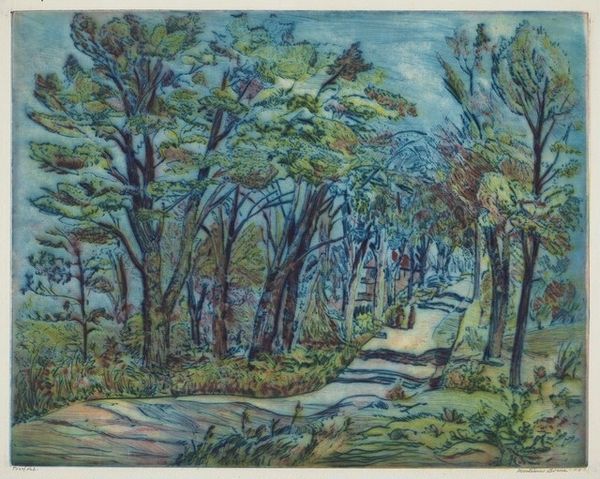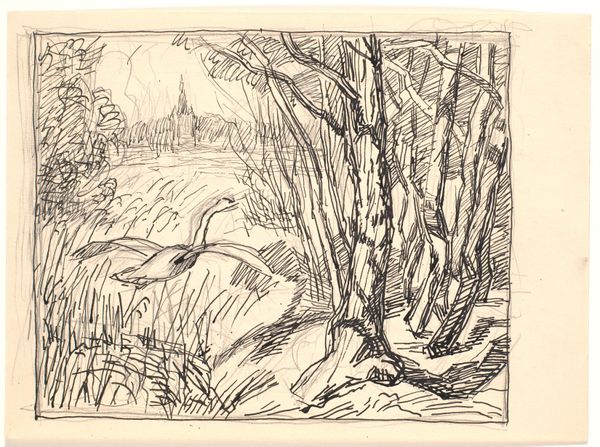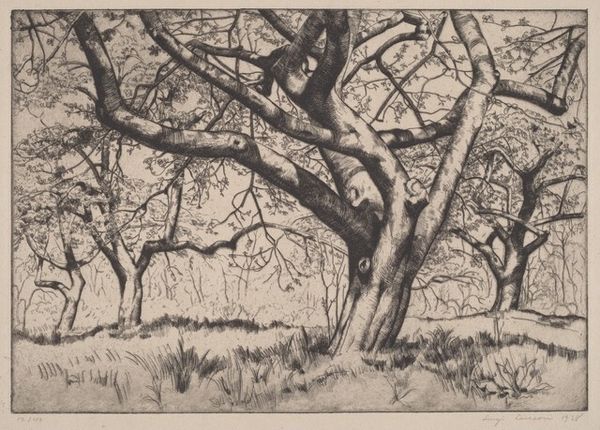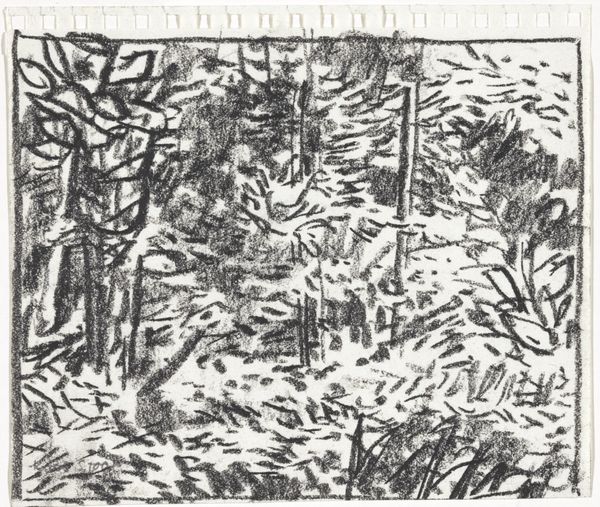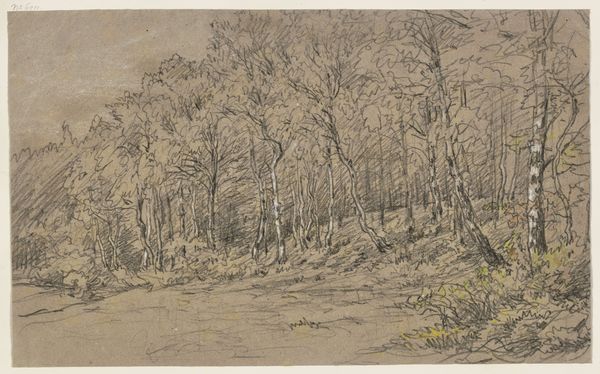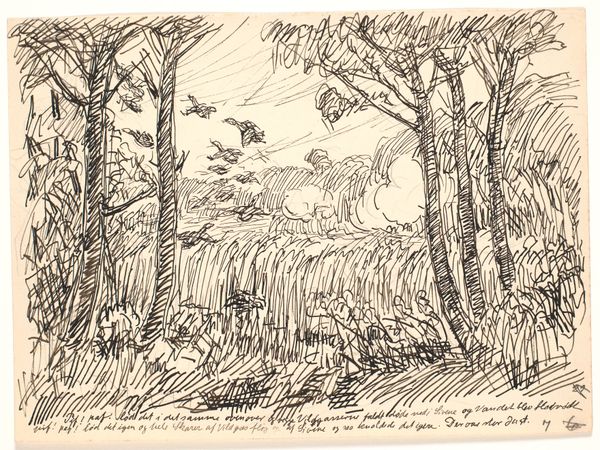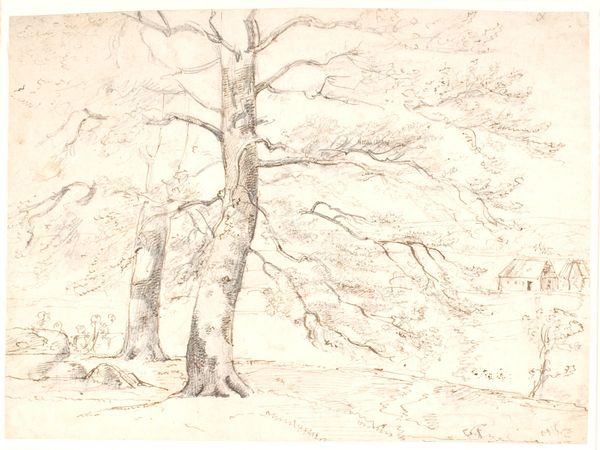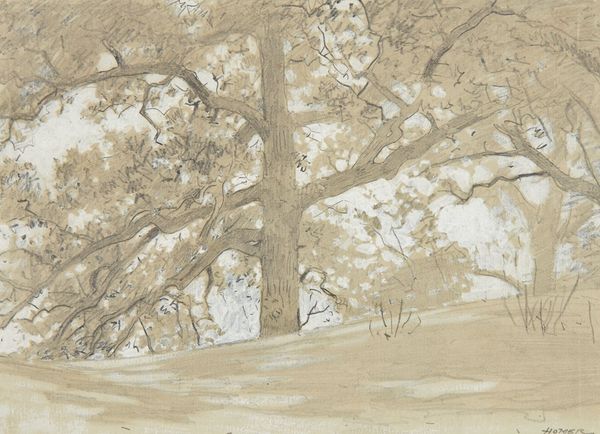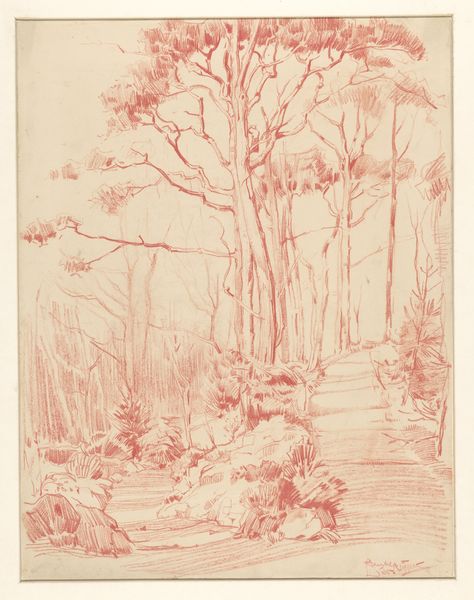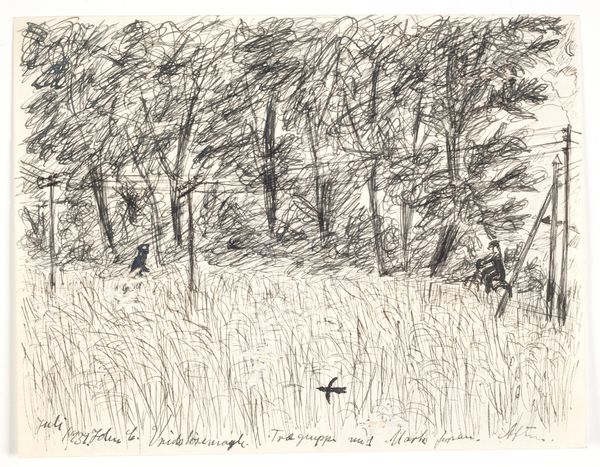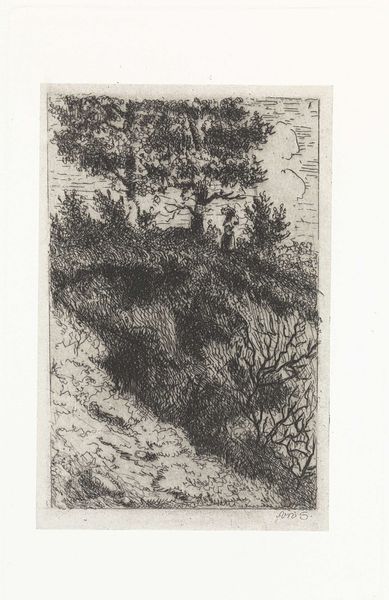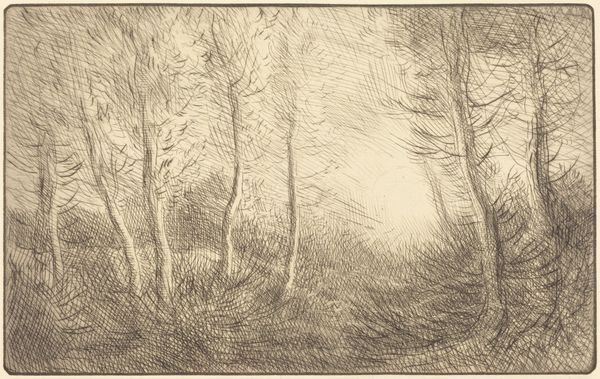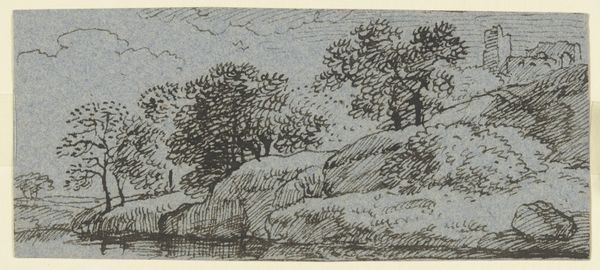
Dimensions: 5 1/4 x 8 1/4 in. (13.3 x 21 cm)
Copyright: Public Domain
Curator: Ah, Theodore Rousseau’s “Autumn Landscape,” likely created between 1855 and 1865. We can appreciate the skillful application of charcoal and pencil in this work, materials that were easily portable and allowed Rousseau to capture the fleeting impressions of nature en plein air. Editor: It’s terribly bleak, isn’t it? Beautiful, yes, in its way, but melancholic. I feel like I’m standing on the edge of something...a change, a loss. The starkness of the trees against the lighter foreground is unnerving, like a skeletal hand reaching out. Curator: Consider, though, the accessibility of drawing as a medium for artists like Rousseau during this period. Paper and readily available charcoals and pencils allowed for a direct, unmediated engagement with the landscape. These studies served as crucial source material for larger, more “finished” paintings done in the studio, essentially a commercial exercise. Editor: Commercial maybe, but the romantic soul shines through! Look at that lone tree leaning over as if bowing to the wind—almost human in its vulnerability. Even with such modest means, Rousseau manages to evoke a profound sense of solitude, perhaps even an existential angst lurking in the darkening woods. It has real emotional depth. Curator: What Rousseau is really dealing with, in a broader historical perspective, is the rapid industrialization occurring during his lifetime. The landscape itself becomes a commodity, something to be possessed and exploited. His depictions, in a sense, stand as documents of a vanishing world and even stand in critique of this destruction of these natural spaces. Editor: Critique, document, *sigh*. I just see the ghosts of summers past. It's a memento mori wrapped in a cloak of autumn air. But in truth I admire him, trying to contain the wild spirit of the forest within the tight frame of pencil strokes! It can make the heart hurt, this fleeting loveliness, no? Curator: Precisely, and recognizing his commitment to plein-air techniques places Rousseau firmly within a broader trend of artists responding to the changing social and economic landscape, allowing these artists to use innovative strategies in the pursuit of a new visual vocabulary. It also opens the door for new techniques and media that expand into future work and inspire contemporaries to find inspiration in process, material, and their means of distribution. Editor: Yes. Perhaps it’s time we stopped analyzing and simply surrendered to the quiet magic of the scene. I feel the urge to go collect some fallen leaves, or just stand amongst those bare branches to commune with what's left and what’s coming. Curator: Very poetic. Indeed, reflecting on the material means and artistic process, "Autumn Landscape" offers layers of insight.
Comments
No comments
Be the first to comment and join the conversation on the ultimate creative platform.
